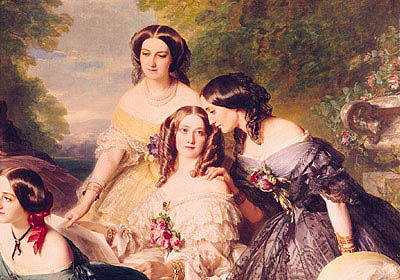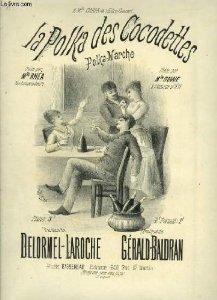Cocottes and Cocodettes: Two faces of the same morality
From "Victorian Paris": https://victorianparis.wordpress.com/category/second-empire/
 The two terms are often confused. In the 19th century Paris, especially during the Second Empire, cocottes
were high-ranking prostitutes; their rank was determined by the number
of ruined men they left in their wake. They were mostly of low origin
and socially unacceptable outside their circle. Even La Païva, the richest cocotte in France and wife of a Portuguese aristocrat, was turned out when she attempted to appear at Court.
The two terms are often confused. In the 19th century Paris, especially during the Second Empire, cocottes
were high-ranking prostitutes; their rank was determined by the number
of ruined men they left in their wake. They were mostly of low origin
and socially unacceptable outside their circle. Even La Païva, the richest cocotte in France and wife of a Portuguese aristocrat, was turned out when she attempted to appear at Court.
Cocodettes, on the other hand, were well-born spirited women in the entourage of Empress Eugénie. Duchesses, countesses, and
 wives of foreign ambassadors aspired to be members of the club.
However, as far as virtue was concerned, cocottes and cocodettes
often stood on the same moral level. In fact, the imperial court was
an upscale brothel where sex was exchanged for favors. Napoleon
III, a notorious sex-addict, cruised the in-crowd for easy conquests.
To an experienced courtier, a twirl of the emperor’s moustache was a
sure sign that the object of his interest would soon find herself in a
horizontal position. To be tumbled by the emperor was
considered a badge of honor. During a ball given at the court, “Madame
de X.,” recalled Baron Haussmann,
“was loudly enthusiastic after what had just happened to her. I had
to snatch her away for a waltz to prevent her from bragging about
it to her husband.”
wives of foreign ambassadors aspired to be members of the club.
However, as far as virtue was concerned, cocottes and cocodettes
often stood on the same moral level. In fact, the imperial court was
an upscale brothel where sex was exchanged for favors. Napoleon
III, a notorious sex-addict, cruised the in-crowd for easy conquests.
To an experienced courtier, a twirl of the emperor’s moustache was a
sure sign that the object of his interest would soon find herself in a
horizontal position. To be tumbled by the emperor was
considered a badge of honor. During a ball given at the court, “Madame
de X.,” recalled Baron Haussmann,
“was loudly enthusiastic after what had just happened to her. I had
to snatch her away for a waltz to prevent her from bragging about
it to her husband.”
Cocottes and cocodettes – two faces of the moral decadence that characterized the exuberant Second Empire. It all came to an end in 1870 when France provoked a war with Prussia and suffered a defeat. The Third Republic, built on the Second Empire’s ruins, proclaimed the return to middle-class morality.